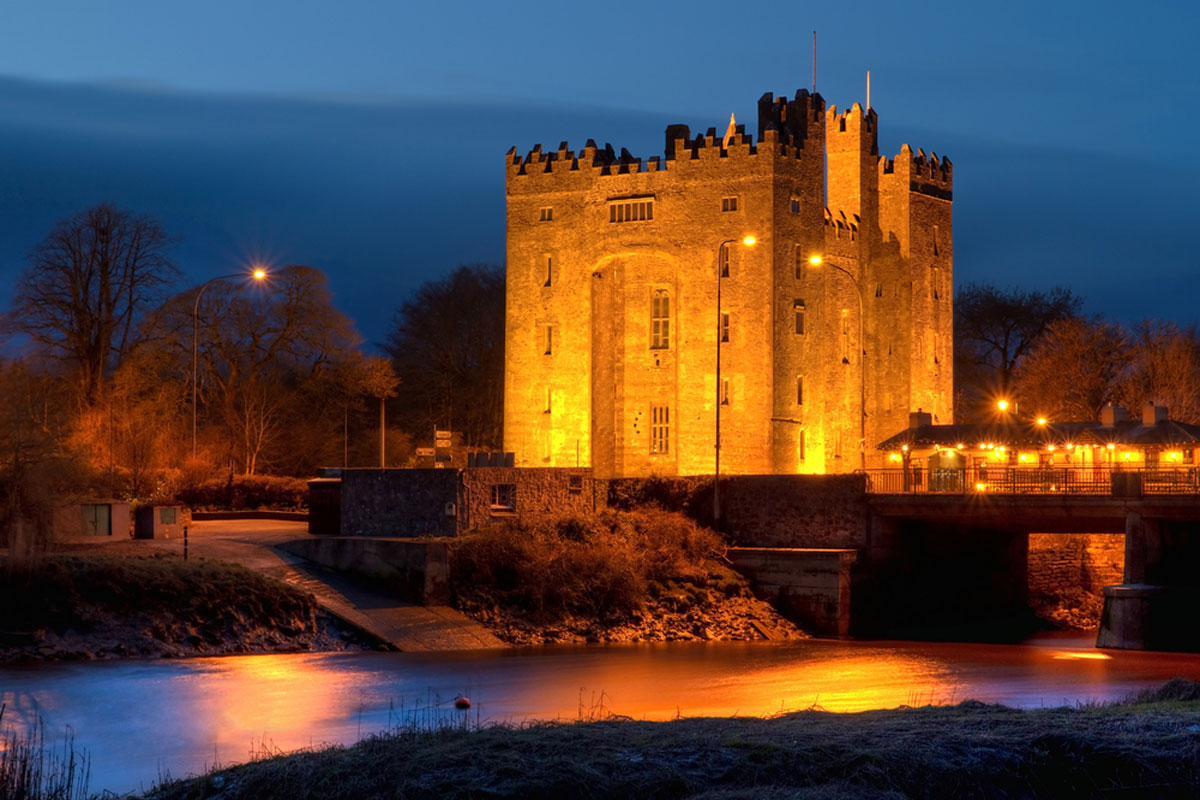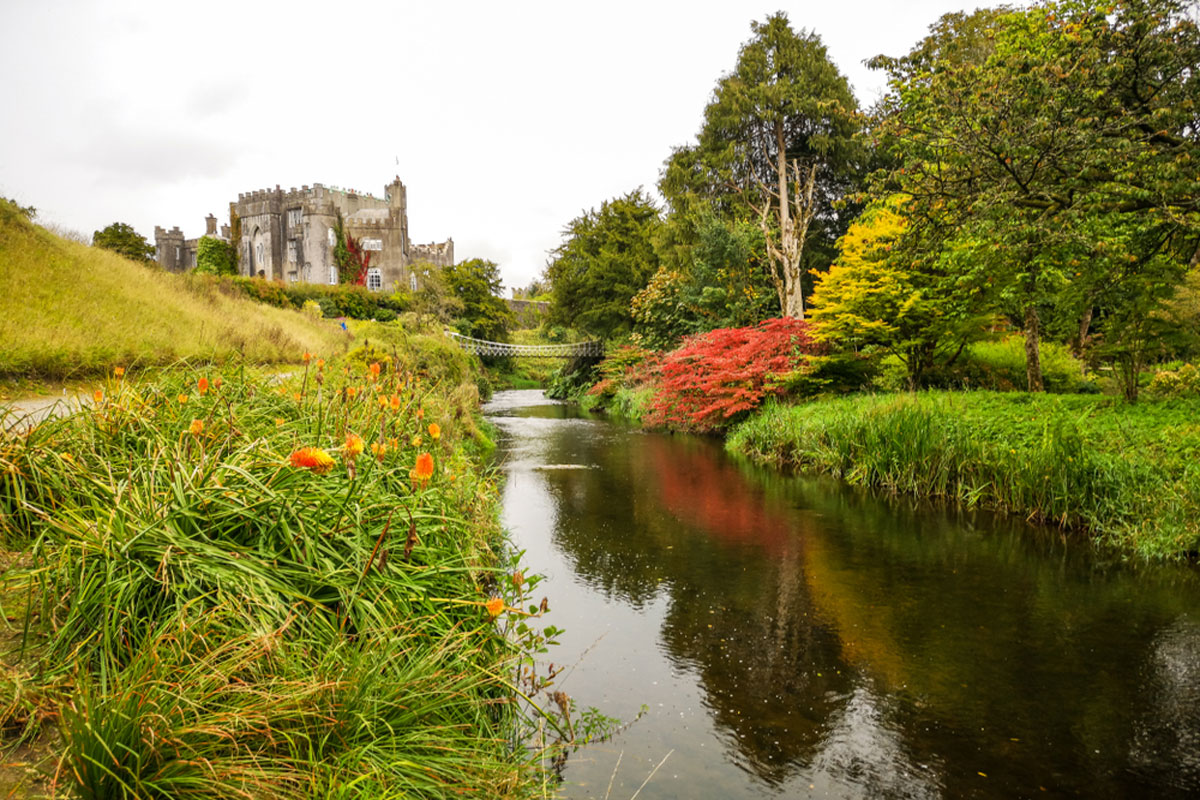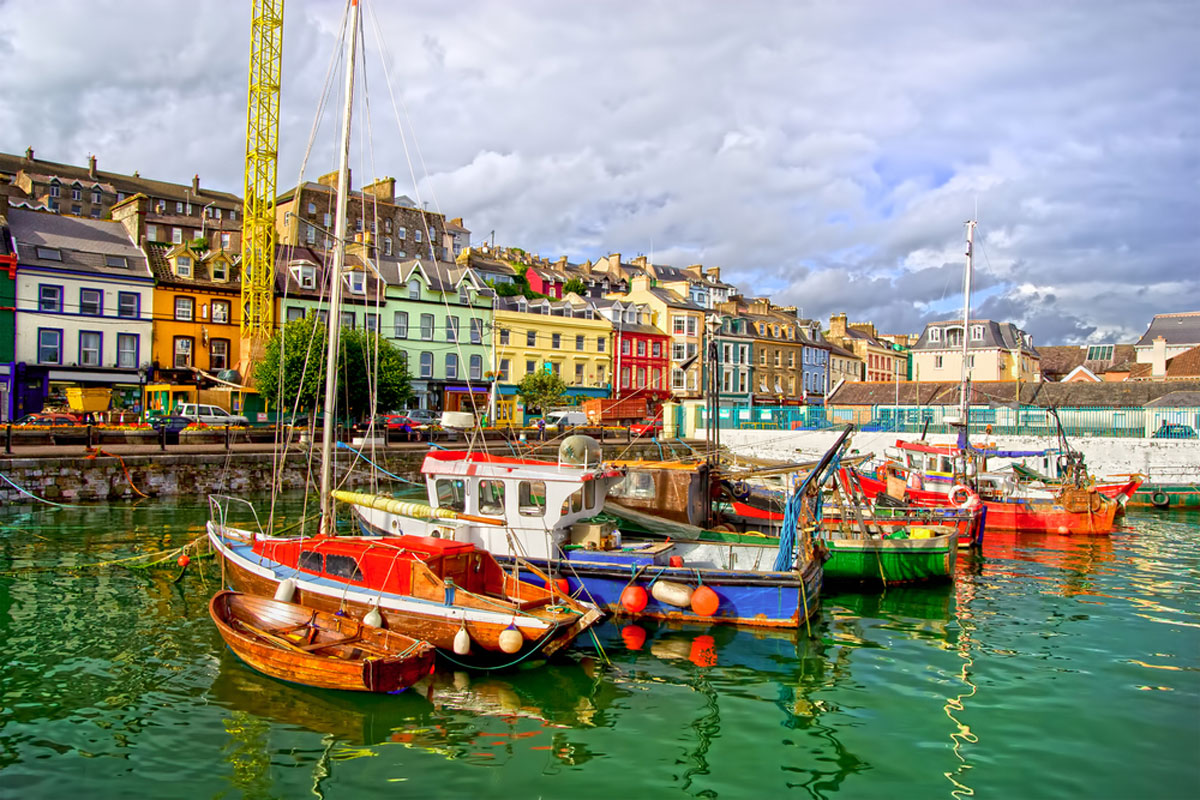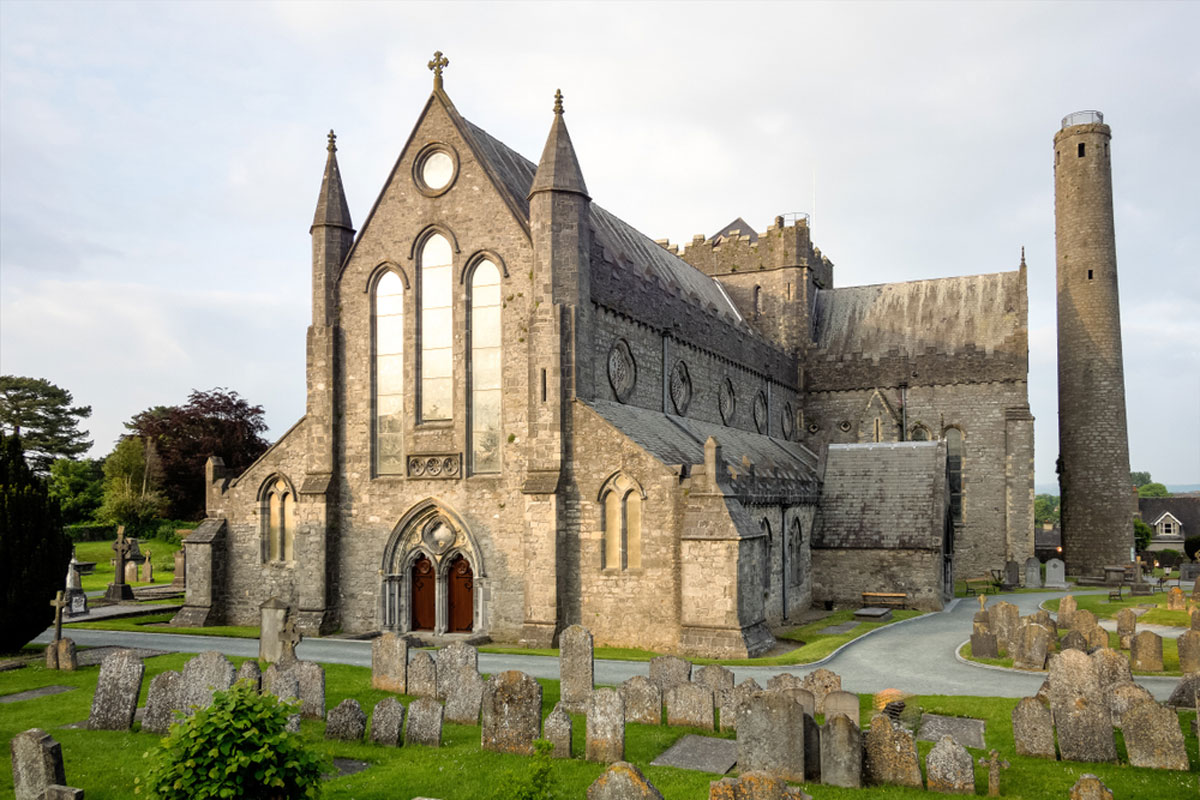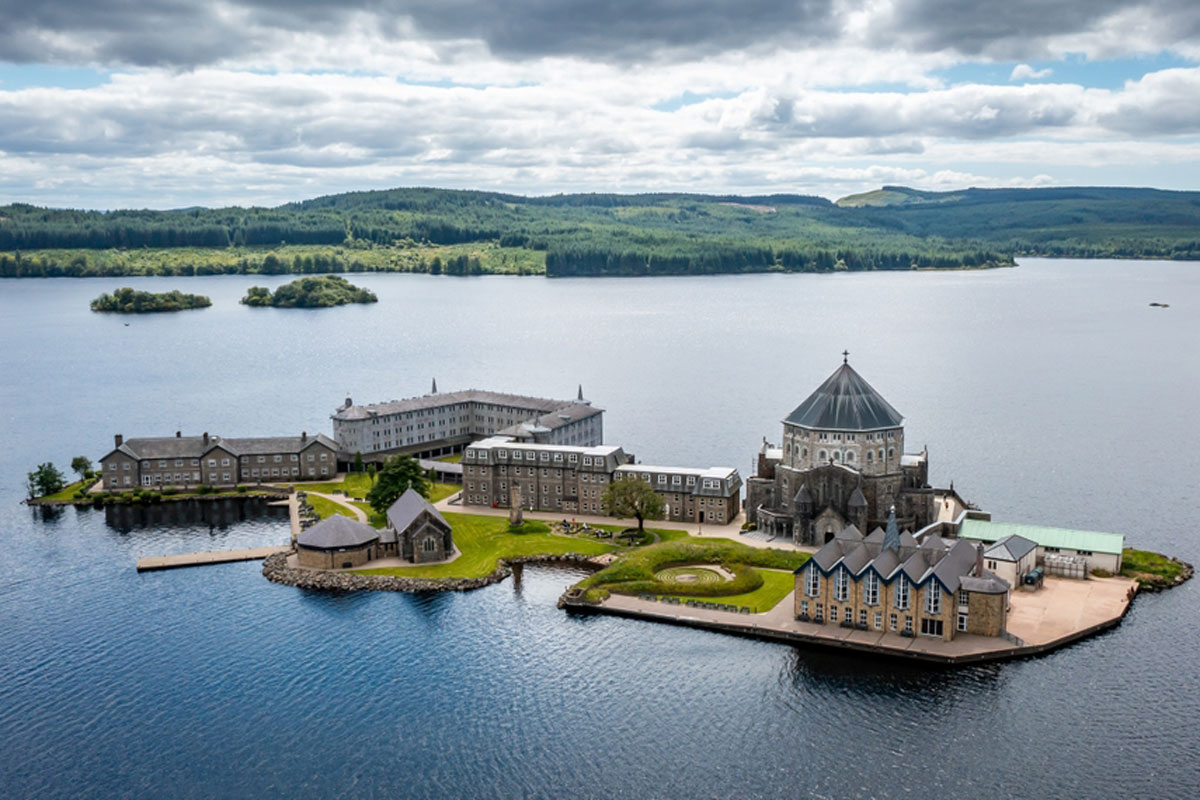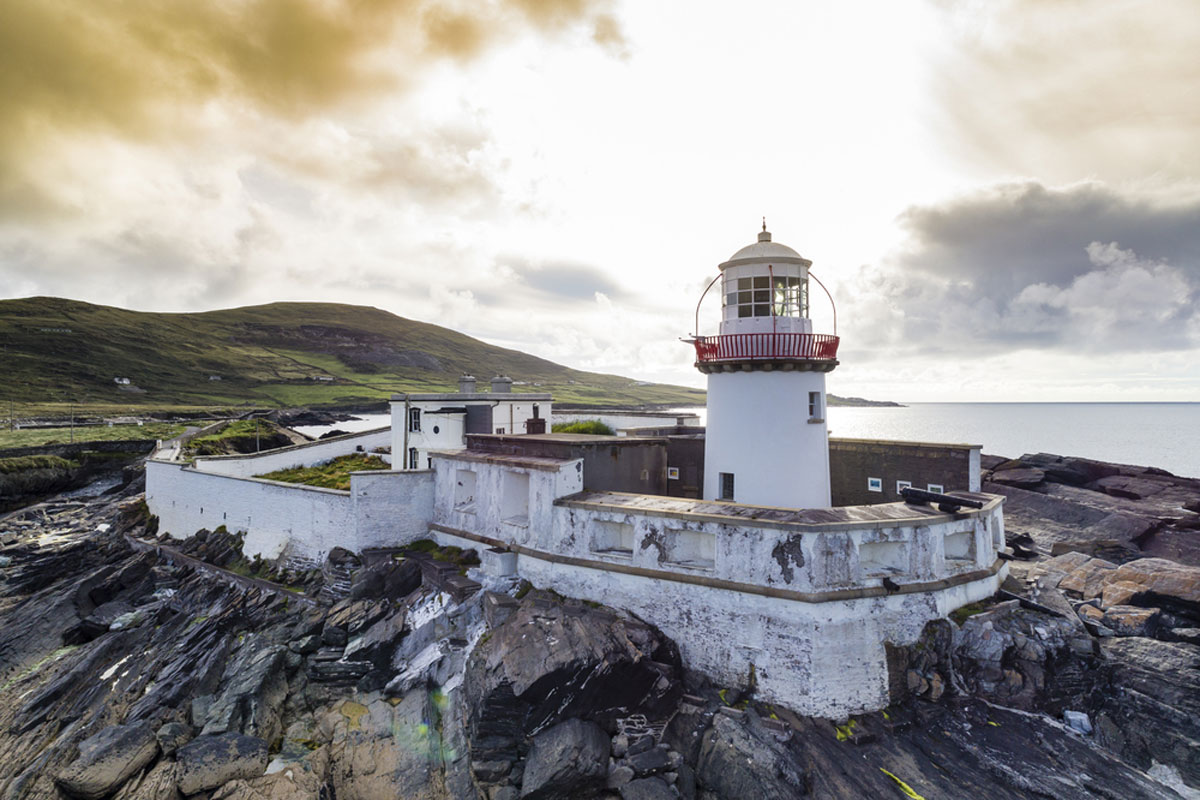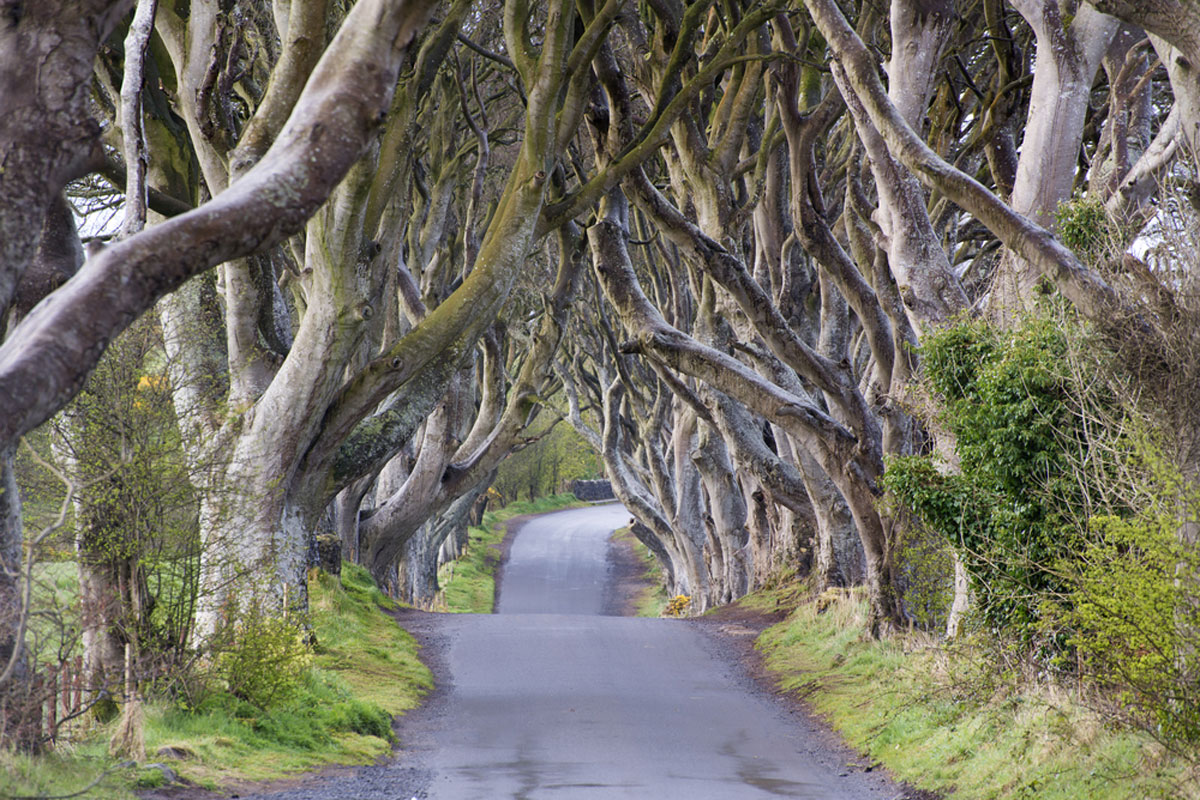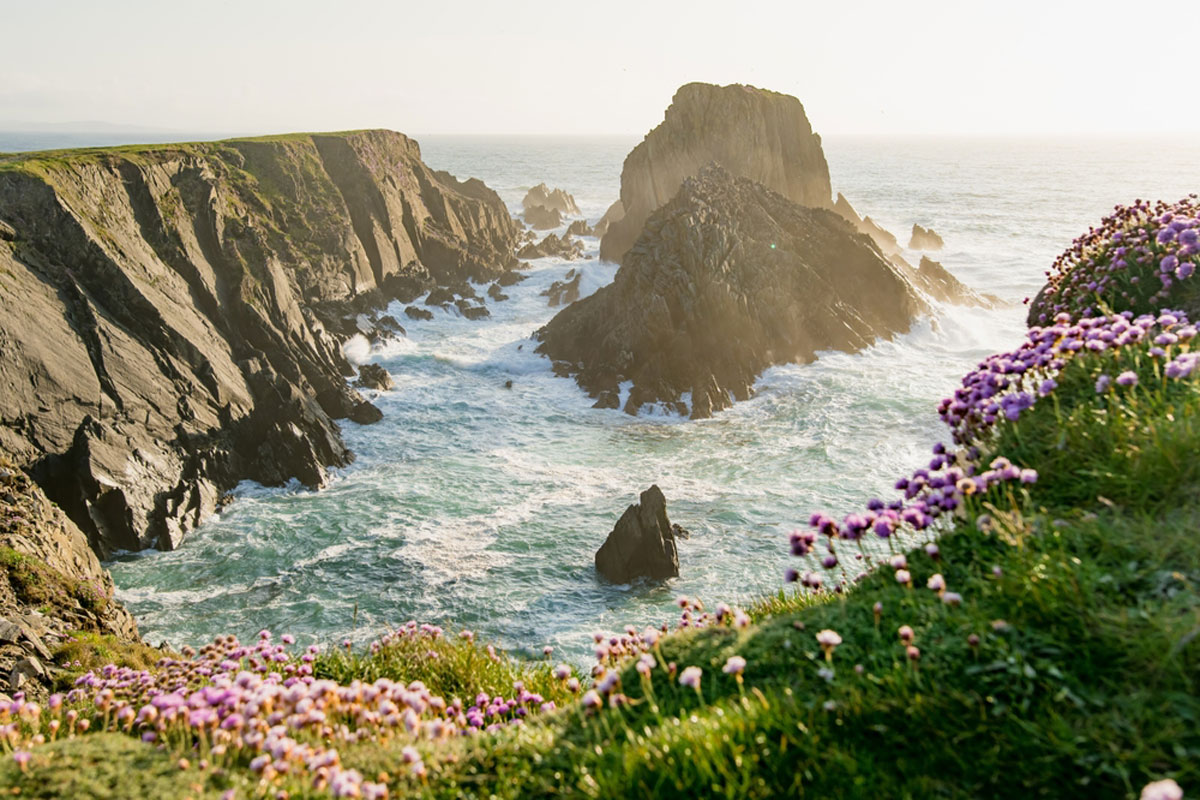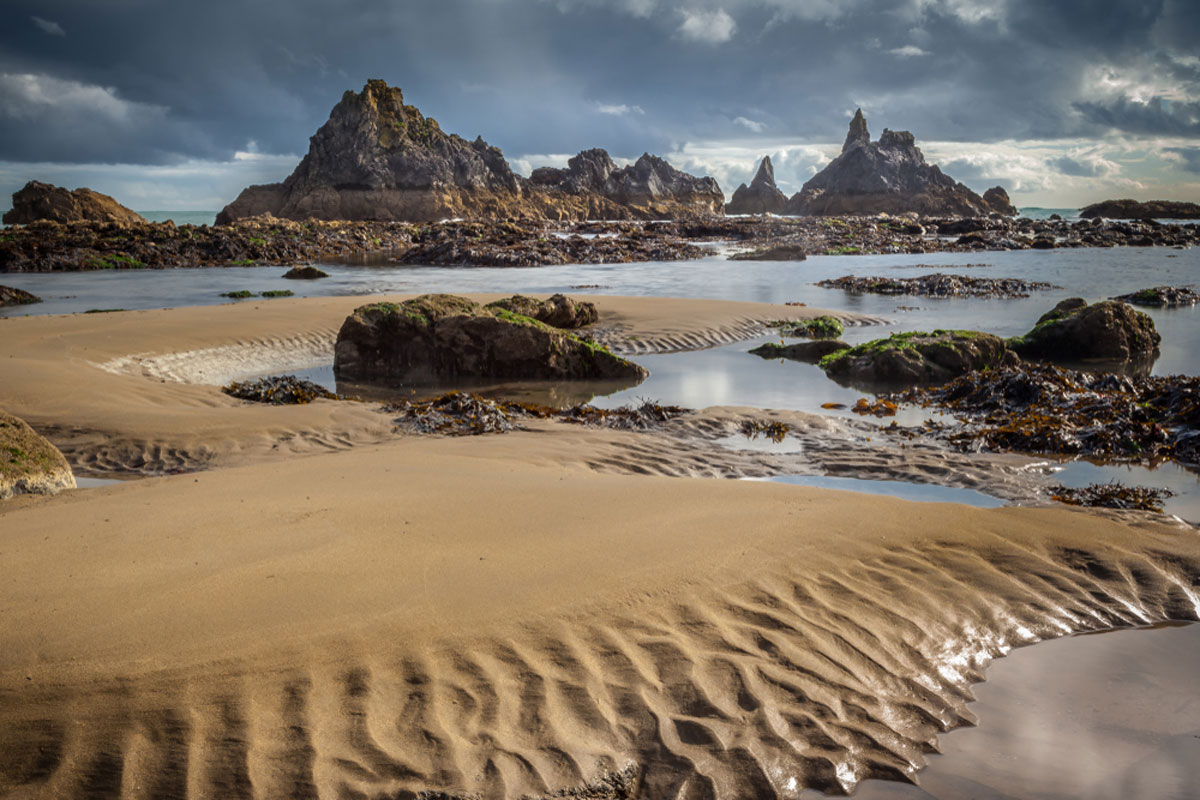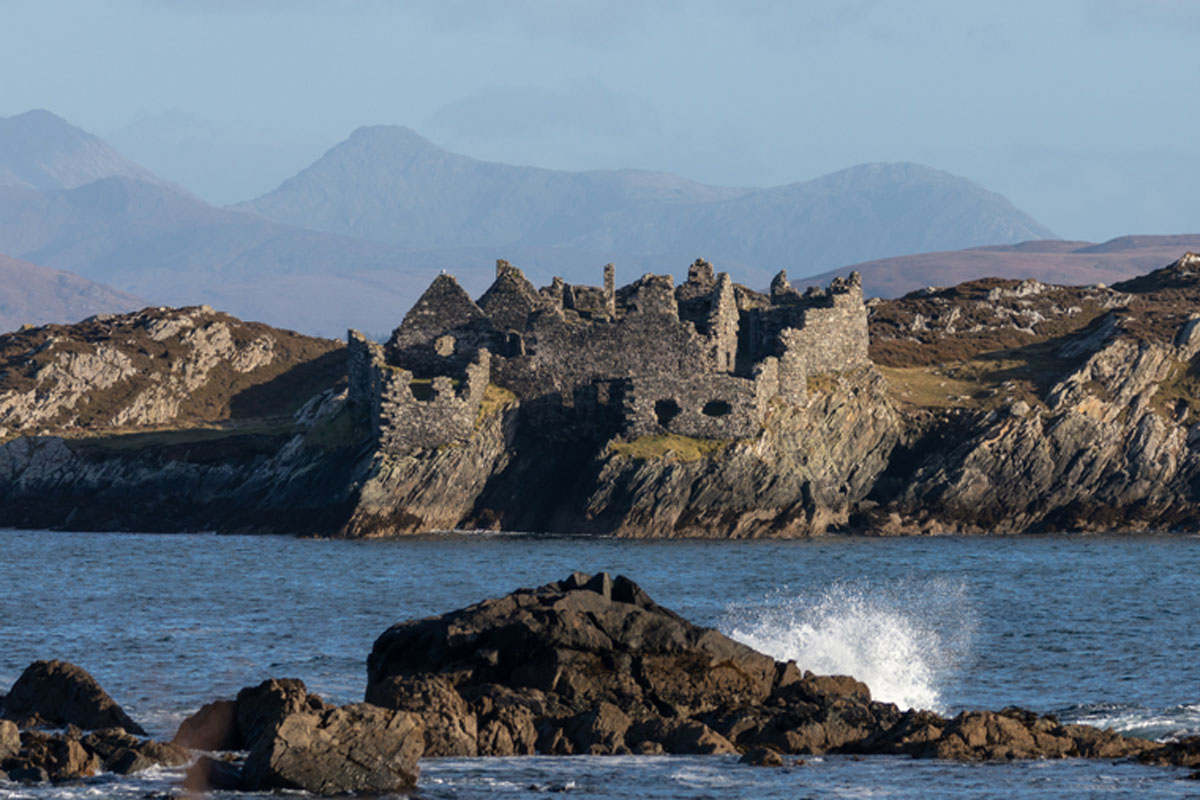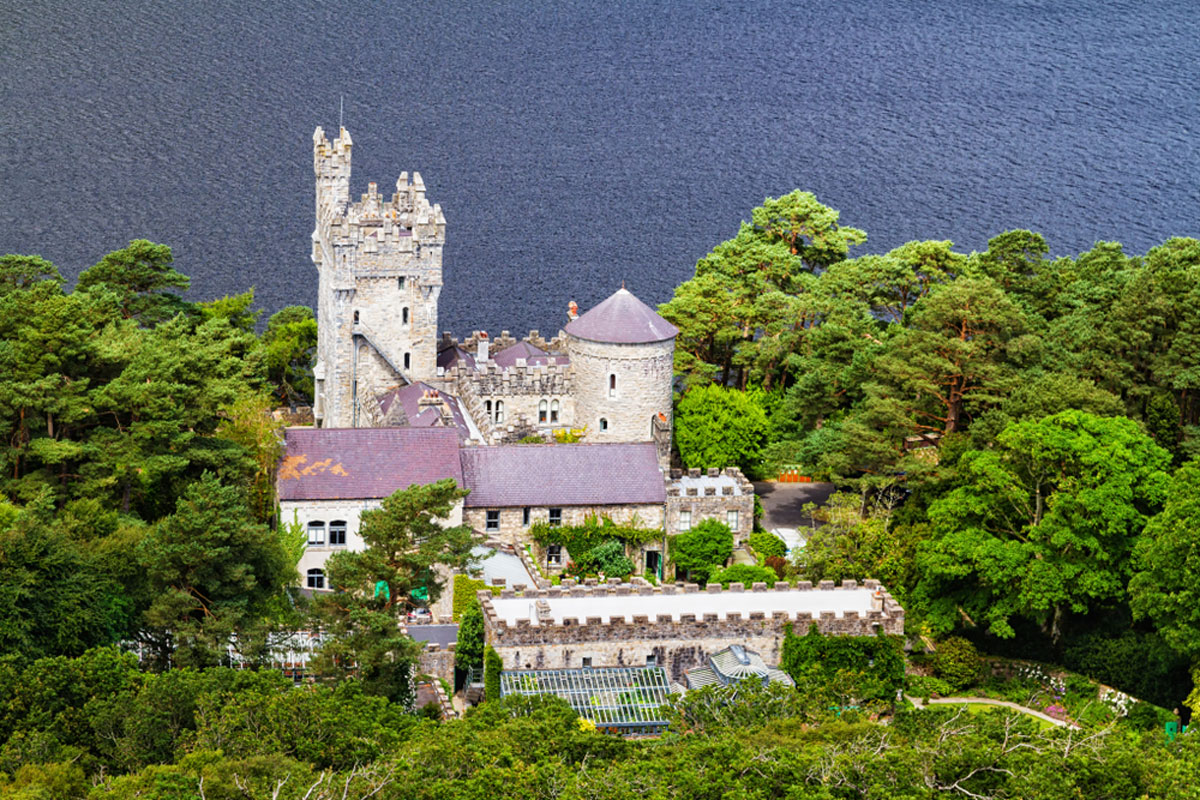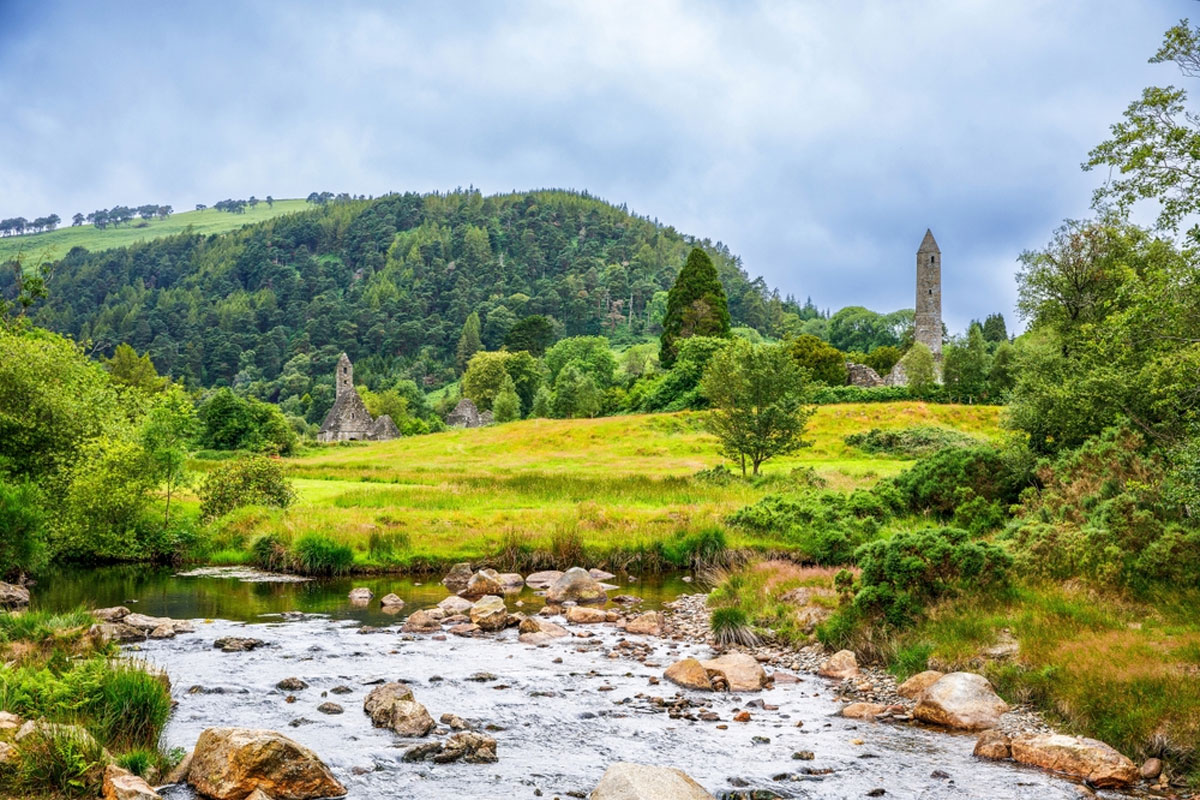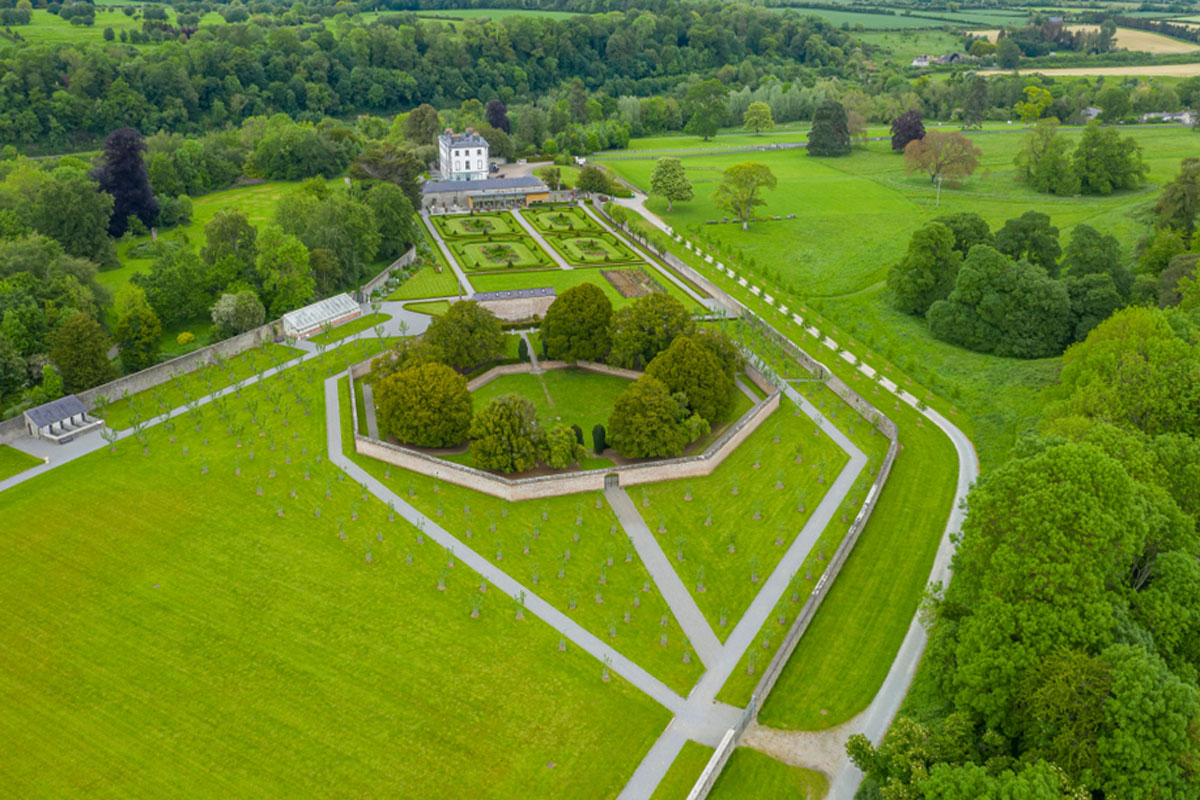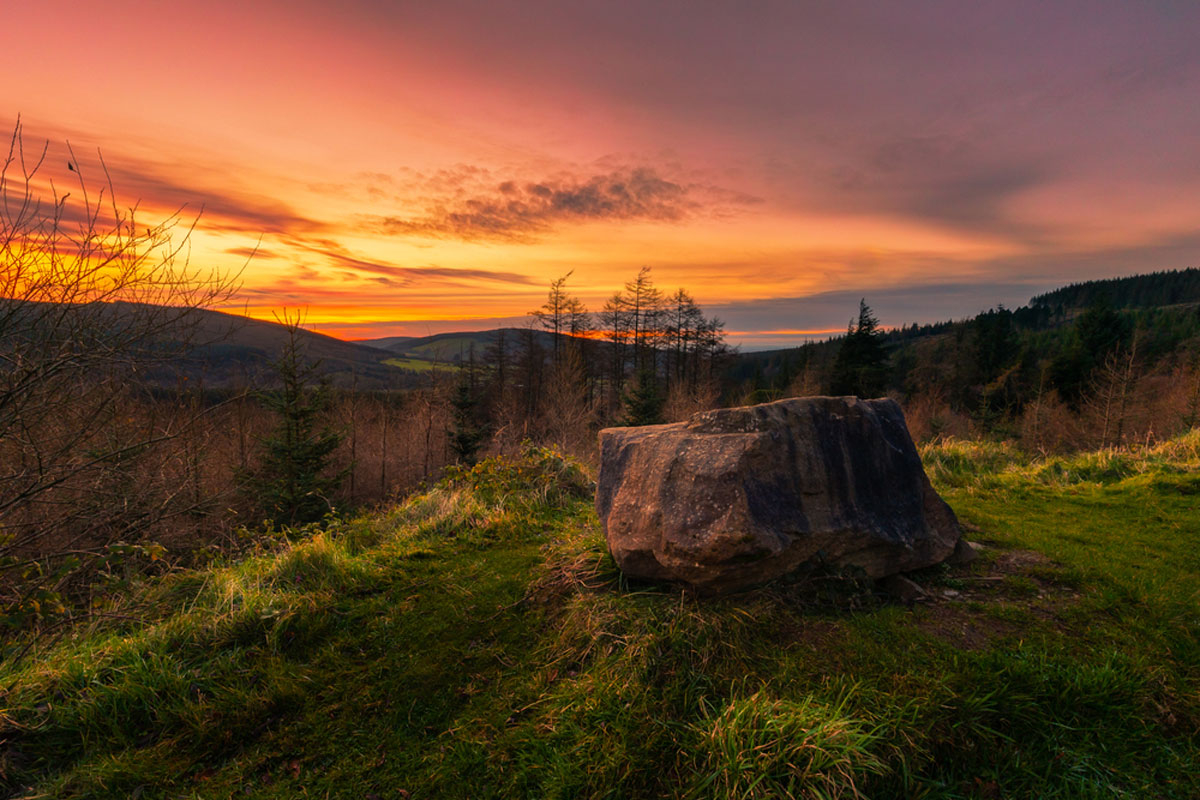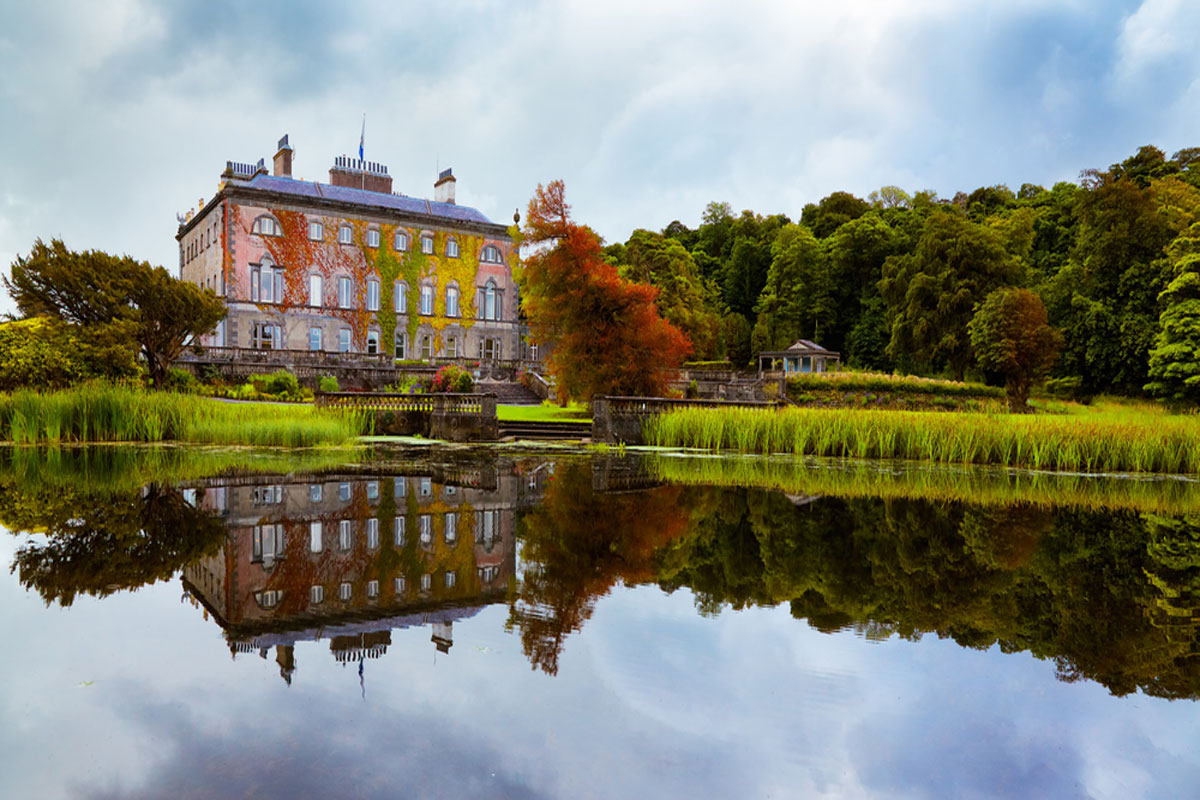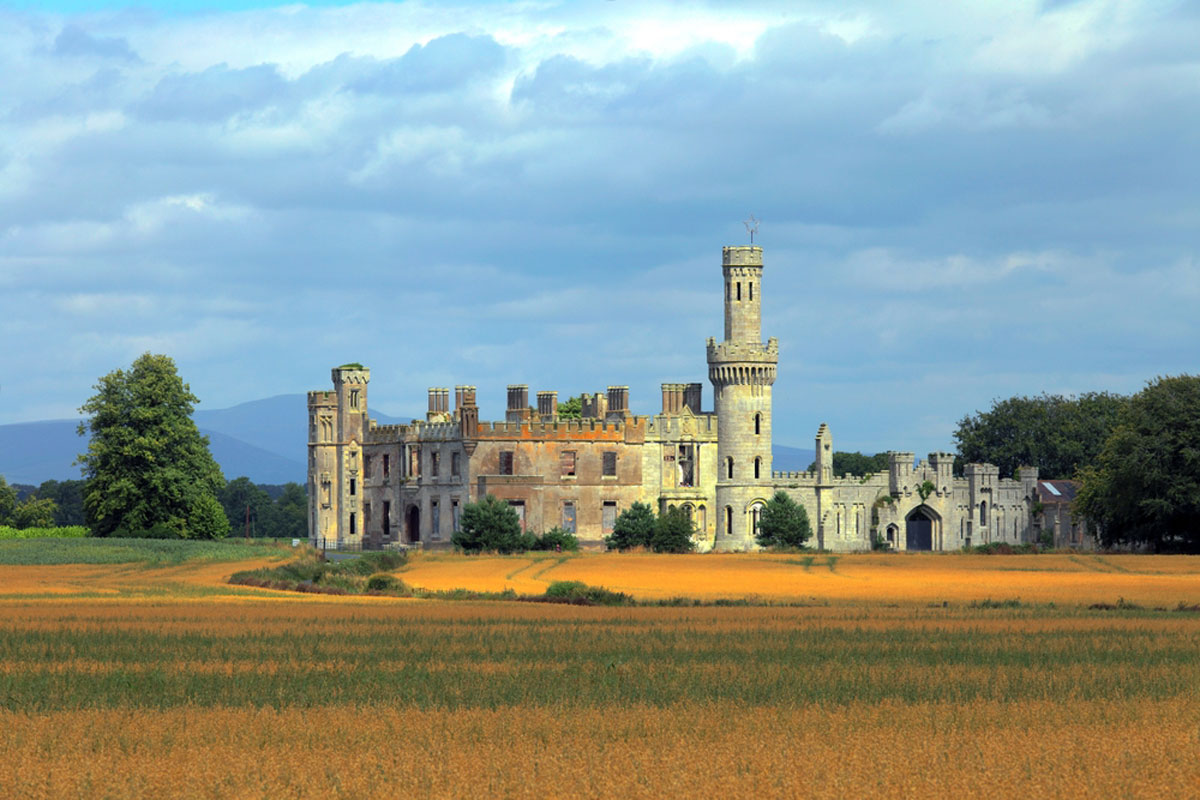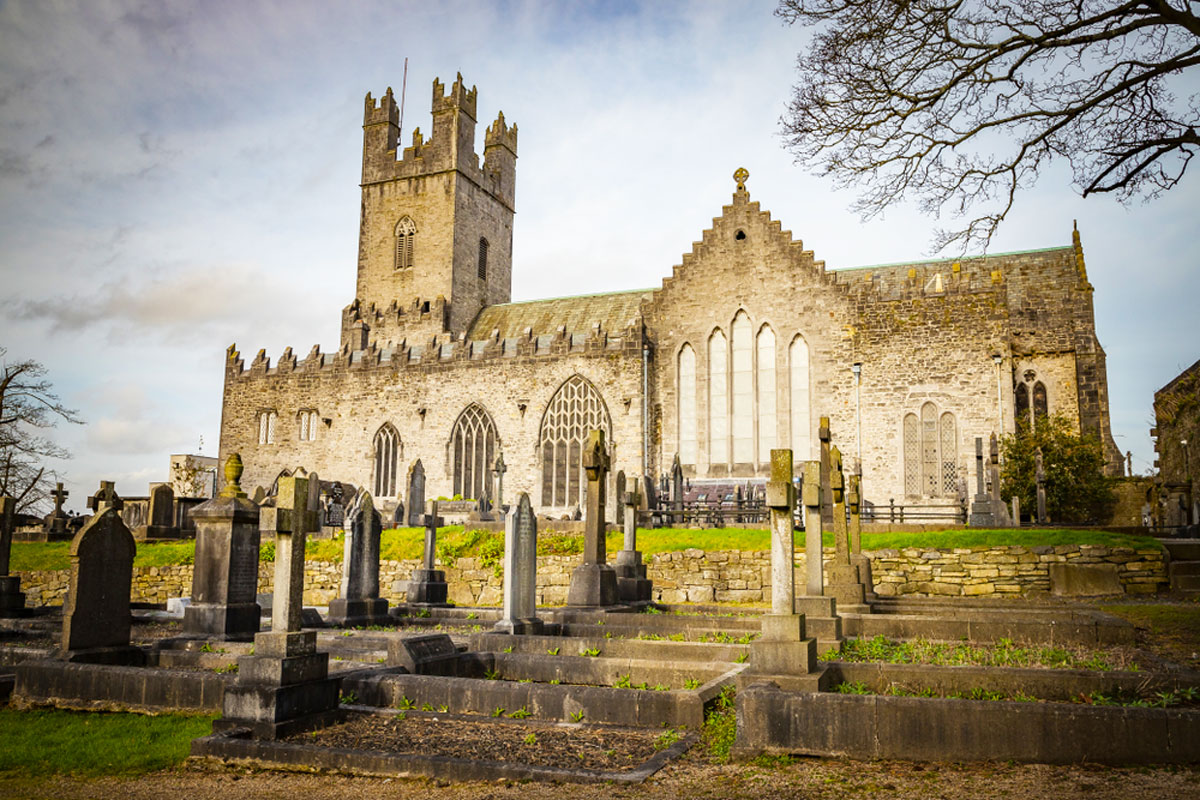Sightseeing in Ireland
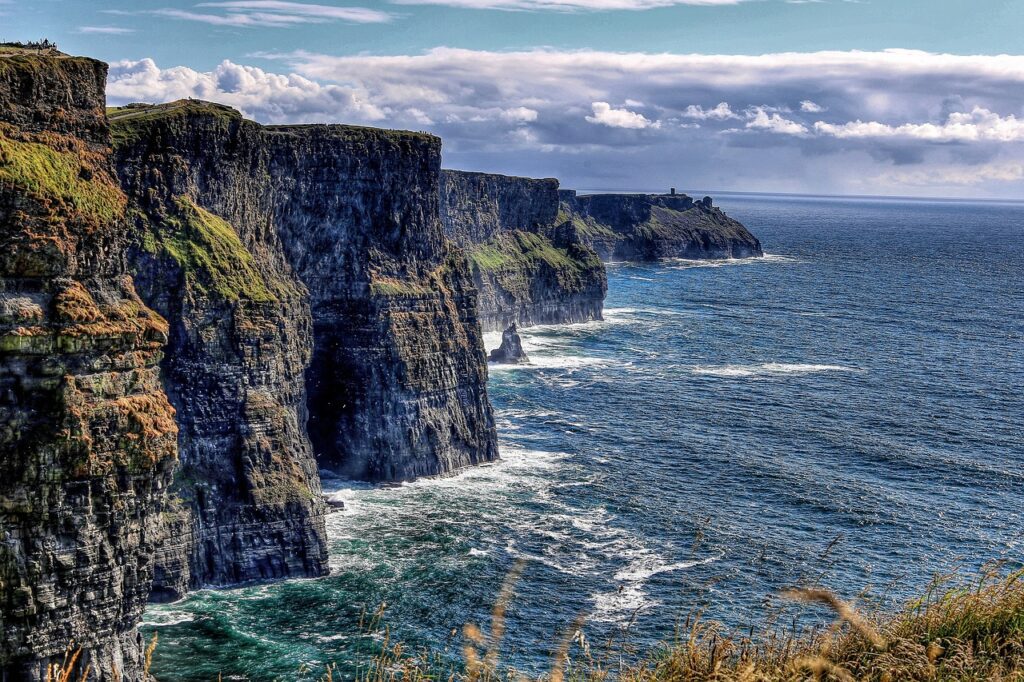

Ireland presents an incredible variety of sights and experiences that cater to every type of traveler, from the rugged coastlines and ancient castles to lively cities filled with music, art, and vibrant culture. Whether you’re drawn to the misty landscapes of the Wild Atlantic Way, enchanted by the historical sites steeped in folklore, or excited to enjoy the warm local hospitality, Ireland offers countless ways to explore and enjoy.

The Magic of Ireland’s Ancient Sites
Ireland’s ancient history is woven into the land, with each region offering a story told through stone circles, hillforts, and monastic ruins. Exploring these historic sites reveals echoes of past civilizations and brings a palpable sense of history and mystery, as Ireland’s rich heritage continues to captivate and inspire.
Newgrange – Brú na Bóinne
Located in County Meath, Newgrange is a 5,200-year-old passage tomb older than Stonehenge and the Egyptian pyramids. This UNESCO World Heritage Site boasts an impressive circular structure with a uniquely engineered passage that aligns with the winter solstice sunrise, illuminating the inner chamber. The site is part of Brú na Bóinne, a complex that includes other notable passage tombs, Knowth and Dowth, which together offer a remarkable glimpse into Ireland’s Neolithic past. Tours provide an educational and unforgettable experience of one of Ireland’s most mystical sites.
Recommended Reading: The Incredible Megalithic Tomb of Newgrange: A Trip Through Ireland’s Ancient History
Hill of Tara
The Hill of Tara in County Meath is a site of immense historical and mythological importance. It was the seat of the High Kings of Ireland and is said to be a portal to the otherworld. This site features several ancient monuments, including the Lia Fáil, or Stone of Destiny, which according to legend, would roar when touched by the rightful king. Visitors are often struck by the atmosphere and panoramic views of the surrounding countryside, which are nothing short of breathtaking.
Recommended Reading: The Hill of Tara: Exploring the Ancient Seat of Ireland’s High Kings
Glendalough – Valley of the Two Lakes
Nestled in County Wicklow, Glendalough is a monastic site founded in the 6th century by St. Kevin. Set in a picturesque valley surrounded by forests and lakes, the area includes well-preserved ruins, such as a round tower, churches, and the remains of a monastery. Glendalough’s serene beauty, coupled with the spiritual essence of its ancient structures, offers a peaceful escape and a walk through Ireland’s early Christian heritage.
Recommended Reading: Unveiling Tranquility: The Peaceful Paths of Glendalough
The Rock of Cashel
A must-visit in County Tipperary, the Rock of Cashel stands on a limestone hill and offers visitors an impressive view of medieval Ireland. This historic site includes a round tower, the Romanesque Cormac’s Chapel, and a high cross, with its roots tied to legends of St. Patrick and the Irish kings. The cathedral ruins and the atmosphere of this ancient site have made it a symbol of Ireland’s medieval heritage and architectural beauty.
Recommended Reading: The Rock of Cashel: A Tour of Medieval Ireland’s History and Architecture
Dún Aonghasa (Dun Aengus)
On the edge of a cliff on Inishmore, one of the Aran Islands, stands Dún Aonghasa, a prehistoric stone fort that overlooks the Atlantic Ocean. Dating back to 1100 BC, the fort’s location and construction demonstrate the strategic knowledge of its builders. A visit here combines awe-inspiring views with a powerful connection to Ireland’s early settlers and provides one of the most unforgettable sightseeing experiences in Ireland.
Recommended Reading: Dún Aonghasa: Exploring the Ancient Fortress, Mystical Landscape, and Timeless Heritage of Inis Mór
Carrowmore Megalithic Cemetery
Situated in County Sligo, Carrowmore is one of Ireland’s largest and oldest cemeteries, with tombs dating back over 5,000 years. This site holds more than 30 tombs and provides visitors with insight into the burial practices and life of Ireland’s Neolithic people. The guided tours at Carrowmore enrich the experience, sharing fascinating information about the history and archaeology of the site.
Recommended Reading: Unveiling the Secrets: Exploring Carrowmore, Ireland’s Oldest Megalithic Cemetery
Ireland’s Enchanting Castles – A Journey Through History and Legend
Ireland’s castles are famed for their dramatic settings, rich histories, and legendary tales of royalty, intrigue, and the supernatural. These iconic fortresses offer visitors a glimpse into Ireland’s storied past, where each castle presents a unique experience filled with heritage, folklore, and a touch of mystery.
Blarney Castle – Home of the Famous Blarney Stone
Located in County Cork, Blarney Castle draws thousands of visitors each year who come to kiss the legendary Blarney Stone, believed to bestow the “gift of gab” or eloquence. Beyond the stone, the castle itself is an impressive medieval fortress with sprawling gardens and mystical landscapes, including the eerie Poison Garden. The labyrinthine castle halls and stunning grounds make it an ideal blend of natural beauty and storied history.
Recommended Reading: Kissing the Stone and Discovering the Castle’s History at Blarney Castle and Gardens
Ashford Castle – Luxury and Legend
Set on the shores of Lough Corrib in County Mayo, Ashford Castle dates back to 1228 and is now a luxurious five-star hotel, offering an immersive experience of medieval grandeur. The castle’s elegant rooms, wood-paneled halls, and lush gardens transport visitors back in time. Staying here, even for a meal or afternoon tea, allows visitors to walk in the footsteps of royalty and celebrities alike, making it a bucket-list experience in Ireland.
Recommended Reading: Ashford Castle: A Timeless Retreat of Luxury, History, and Legend
Dublin Castle – From Viking Fort to State Complex
In the heart of Dublin, Dublin Castle has played a central role in Irish history for over 800 years. Originally a Viking fortress, it was later transformed into a state residence and government complex. Visitors can explore the medieval undercroft, the Gothic chapel, and the lavish State Apartments, each reflecting a different period in Ireland’s complex history. Dublin Castle is a vibrant blend of architecture and history, providing insight into Ireland’s past and present.
Recommended Reading: Dublin Castle: From Viking Fort to Iconic Irish Landmark
Kilkenny Castle – A Norman Gem
Kilkenny Castle in County Kilkenny is a beautiful example of Norman architecture, with its iconic round towers and expansive gardens. Built in the 12th century, the castle served as the residence of the powerful Butler family for centuries. Today, visitors can tour its opulent rooms, stroll through the picturesque Rose Garden, and explore the grounds along the River Nore. The city of Kilkenny itself, with its medieval architecture and narrow streets, adds to the castle’s historic charm.
Recommended Reading: Kilkenny Castle: A Journey through Ireland’s Medieval History and Architecture
Cahir Castle – A Fortress Frozen in Time
Perched on a rocky island in the River Suir in County Tipperary, Cahir Castle is one of Ireland’s best-preserved medieval castles. Its imposing walls, complete with towers, dungeons, and battlements, tell stories of past battles and sieges. The castle’s strategic design and medieval features make it a must-see for history buffs and a striking backdrop for photographs.
Recommended Reading: Cahir Castle – A Fortress Frozen in Time
Trim Castle – Setting of ‘Braveheart’
Located in County Meath, Trim Castle is Ireland’s largest Norman castle and is famous as a filming location for the movie Braveheart. Built in the 12th century, this fortress was a symbol of Norman power and control in Ireland. Visitors can tour its towers and learn about the architectural ingenuity that protected it during battles. The views from the top offer a sweeping look over the Boyne Valley, one of Ireland’s most historically rich landscapes.
Recommended Reading: Trim Castle – Setting of Braveheart
Ross Castle – Lakeside Majesty in Killarney National Park
Ross Castle, on the edge of Lough Leane in County Kerry, is a picturesque 15th-century stronghold surrounded by the stunning scenery of Killarney National Park. The castle is steeped in folklore, with stories of ghostly apparitions and mythical figures. A visit here combines history with nature, as visitors can also explore the national park, take a boat ride across the lake, or hike the nearby trails.
Recommended Reading: Roaming the Remnants of Ross Castle: A Glimpse into Ireland’s Medieval Past
Leap Castle – Ireland’s Most Haunted Castle
For those drawn to the supernatural, Leap Castle in County Offaly is reputedly the most haunted castle in Ireland. This medieval stronghold has a dark history filled with family feuds, mysterious deaths, and ghostly tales, including that of the “Elemental,” a spirit said to roam its halls. Tours of Leap Castle provide insight into its unsettling past, making it an unforgettable experience for those intrigued by Ireland’s ghostly legends.
Recommended Reading: Leap Castle: Ireland’s Most Haunted Fortress
Ireland’s Natural Wonders – Landscapes of Awe and Tranquility
Ireland’s natural beauty is legendary, with its rugged coastlines, peaceful lakes, lush forests, and rolling green hills that have inspired poets, artists, and travelers for centuries. These stunning landscapes invite visitors to experience the raw beauty and tranquility of the Emerald Isle.
The Cliffs of Moher – Ireland’s Iconic Coastline
Rising dramatically above the Atlantic Ocean on Ireland’s west coast, the Cliffs of Moher in County Clare are one of Ireland’s most breathtaking natural wonders. Towering up to 700 feet, these cliffs offer panoramic views over the ocean and nearby Aran Islands. On clear days, visitors may spot puffins nesting on the cliffs, adding to the wild charm of this UNESCO Global Geopark. The visitor center provides insights into the geology, flora, and fauna of this remarkable site.
Recommended Reading: The Cliffs of Moher: Ireland’s Majestic Coastline Explored
The Giant’s Causeway – A Geological Marvel
The Giant’s Causeway in County Antrim, Northern Ireland, is a mesmerizing natural formation of about 40,000 interlocking basalt columns created by ancient volcanic activity. This UNESCO World Heritage site is steeped in local legend, said to have been built by the giant Finn McCool. Walking across the hexagonal stones that descend into the ocean, visitors can experience the unique landscape that has captivated imaginations for generations.
Recommended Reading: The Giant’s Causeway – A Geological Marvel
Killarney National Park – Lakes, Mountains, and Wildlife
In County Kerry, Killarney National Park spans over 26,000 acres and features majestic mountains, serene lakes, dense woodlands, and historic sites. The park is a haven for nature lovers, offering hiking trails, boating on the lakes, and sightings of native red deer. Highlights include Muckross House and Gardens, Torc Waterfall, and the scenic Gap of Dunloe, each providing visitors with an intimate look at Ireland’s wild beauty.
Recommended Reading: Killarney National Park: A Guide to Ireland’s First National Park
Connemara – A Land of Stark Beauty
Connemara in County Galway is famed for its rugged mountains, sparkling lakes, and untouched wilderness. This region offers a mix of coastal and mountain scenery, including the Twelve Bens mountain range and the scenic Sky Road. Connemara National Park is ideal for hiking, with trails of varying difficulty that reward visitors with stunning views over the Atlantic coastline and countryside.
Recommended Reading: Connemara’s Hidden Gem: The Quiet Beauty of Inishbofin Island | The Connemara National Park: A Guide to Ireland’s Wild and Rugged West Coast
The Burren – A Limestone Landscape Like No Other
The Burren in County Clare is an otherworldly landscape of limestone pavements, caves, and rare flora. Despite its stark appearance, the Burren is home to a surprising diversity of plant life, including Arctic, Mediterranean, and Alpine species growing side by side. Visitors can explore the Burren National Park, marvel at the Poulnabrone Dolmen, an ancient portal tomb, and discover hidden gems like underground caverns and rivers.
Recommended Reading: The Burren – A Limestone Landscape Like No Other
The Ring of Kerry – A Scenic Coastal Drive
The Ring of Kerry, a 111-mile circular route, is one of Ireland’s most famous scenic drives. This route offers sweeping views of the Atlantic coastline, lush green hills, charming villages, and historic landmarks. Highlights include the Skellig Islands, the Kerry Cliffs, and Rossbeigh Beach, each offering visitors a unique aspect of Ireland’s coastal charm. The journey can be enjoyed by car, bike, or even on foot for the adventurous.
Recommended Reading: The Ring of Kerry – A Scenic Coastal Drive
Slieve League – Ireland’s Tallest Accessible Sea Cliffs
Located in County Donegal, the Slieve League cliffs are some of the tallest sea cliffs in Europe, rising over 1,900 feet above the Atlantic. These cliffs are less crowded than the Cliffs of Moher but equally stunning, offering breathtaking views and hiking trails for those seeking a wilder experience. On a clear day, the views from the summit stretch all the way to the mountains of Sligo.
Recommended Reading: Slieve League – Ireland’s Tallest Accessible Sea Cliffs
Lough Corrib: A Haven for Nature, History, and Adventure
Lough Corrib, stretching across Galway and Mayo, is the Republic of Ireland’s largest lake, dotted with over 1,300 islands. The lake is popular for fishing, boating, and bird-watching, with waters that reflect the surrounding mountains and woodlands. Visitors can take boat tours to Inchagoill Island, which houses ancient ruins, or simply enjoy the serene beauty of the lake’s shores.
Recommended Reading: Lough Corrib: Ireland’s Majestic Waterway
Ireland’s Towns and Villages – Discovering Local Charm and Culture
Ireland’s towns and villages are rich in character, each offering a unique narrative that reveals the island’s deep-rooted heritage, artistic traditions, and vibrant community spirit. Wander through these enchanting places, where cobblestone streets lead you to inviting pubs brimming with warmth, bustling local markets display the craftsmanship of skilled artisans, and historic landmarks whisper the stories of those who came before. In these charming settings, visitors can immerse themselves in the essence of Ireland, enjoying unforgettable experiences that celebrate both the past and present.
Kilkenny – Medieval Marvel and Craft Haven
Known as the “Marble City,” Kilkenny is celebrated for its well-preserved medieval architecture and vibrant arts scene. The iconic Kilkenny Castle overlooks the city, and St. Canice’s Cathedral features an impressive round tower you can climb for panoramic views. Kilkenny is also a hotspot for craft and design, with local workshops and galleries showcasing Irish artisanship.
Recommended Reading: The Marble City of Kilkenny: Discovering Medieval Streets and Castles
Dingle – A Vibrant Coastal Village
Located on the Dingle Peninsula in County Kerry, Dingle is a colorful fishing village known for its lively music, friendly locals, and breathtaking coastal scenery. The town’s pubs regularly host traditional Irish music sessions, and local seafood is a must-try. Nearby attractions include Slea Head Drive and the ancient Gallarus Oratory.
Recommended Reading: Dingle – A Vibrant Coastal Village
Westport – Gateway to Croagh Patrick
Westport in County Mayo is a charming town with Georgian architecture, picturesque riverside promenades, and a thriving music scene. It’s also the gateway to Croagh Patrick, Ireland’s holy mountain, which draws pilgrims and hikers alike. Visitors can relax in Westport’s many cafés and pubs or enjoy a boat trip on Clew Bay to see its famous islets.
Recommended Reading: Westport: Ireland’s Charming Heritage Town
Kinsale – Ireland’s Culinary Capital
Known as Ireland’s culinary capital, Kinsale in County Cork is beloved for its gourmet restaurants, seafood, and annual food festivals. The town’s colorful streets are lined with charming shops, galleries, and pubs. Don’t miss Charles Fort, a 17th-century star-shaped fort with scenic views over Kinsale Harbor.
Recommended Reading: Kinsale Harbour: A Visit to Ireland’s Seaside Foodie Haven
Enniskillen – Island Town in County Fermanagh
Enniskillen is Ireland’s only island town, surrounded by the waters of Lough Erne. Known for its castle, lakeside scenery, and lively arts scene, Enniskillen is a beautiful destination for those who enjoy boating, fishing, or simply strolling through history-laden streets. The nearby Marble Arch Caves are a fascinating addition to any visit.
Recommended Reading: Enniskillen: The Island Town Where History, Nature, and Culture Converge
Doolin – Traditional Music Hub
This small village in County Clare is renowned for its traditional Irish music scene. With pubs like O’Connor’s hosting nightly sessions, Doolin attracts musicians and fans from around the world. It’s also a gateway to the Cliffs of Moher and the nearby Burren, offering stunning natural beauty along with rich cultural experiences. Recommended Reading: Doolin: Ireland’s Traditional Music Capital
Carlingford – A Quaint Medieval Village
Nestled between the Cooley Mountains and Carlingford Lough, Carlingford in County Louth is a well-preserved medieval village. Its narrow lanes are dotted with historic sites like King John’s Castle and Taaffe’s Castle, as well as cozy pubs and quaint shops. The area offers scenic hiking trails and water sports for outdoor enthusiasts.
Recommended Reading: Carlingford: Ireland’s Hidden Medieval Gem – History, Scenery, and Modern Charm
Cobh – Titanic’s Last Port of Call
Known as the last port of call for the Titanic, Cobh in County Cork is steeped in maritime history. Its colorful waterfront houses, towering St. Colman’s Cathedral, and Titanic Experience museum attract visitors fascinated by its historical significance. Cobh also offers a gateway to explore Spike Island, Ireland’s Alcatraz.
Recommended Reading: Discovering the Charms of Cobh: Ireland’s Colorful Maritime Town
Clifden – The Capital of Connemara
Surrounded by Connemara’s dramatic landscapes, Clifden in County Galway is known for its arts festivals, lively pubs, and stunning Atlantic views. The Sky Road scenic drive offers breathtaking views, and Clifden’s quaint streets invite leisurely exploration, with galleries, shops, and cafés providing a welcoming atmosphere.
Recommended Reading: Clifden – The Jewel of Connemara
Killarney – Gateway to Lakes and Mountains
Nestled near the stunning Lakes of Killarney, this town is beloved by travelers for its access to Killarney National Park, the Gap of Dunloe, and Ross Castle. Killarney’s welcoming pubs, craft shops, and friendly residents make it an ideal starting point for exploring the beauty of County Kerry.
Recommended Reading: Killarney: Where Ireland’s Wild Heart Awakens
Exploring Ireland’s Communities
In exploring these towns and villages, visitors experience the hospitality and warmth of Irish communities. Each destination offers something unique, from culinary delights and live music to ancient castles and scenic landscapes, all imbued with a sense of history and tradition. Sightseeing in Ireland is as much about the people and stories as it is about the sights themselves, leaving every traveler with memories and a deeper connection to this beautiful island.
